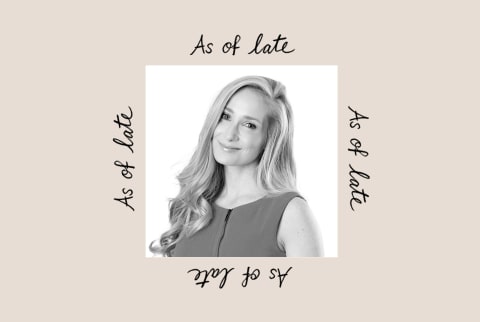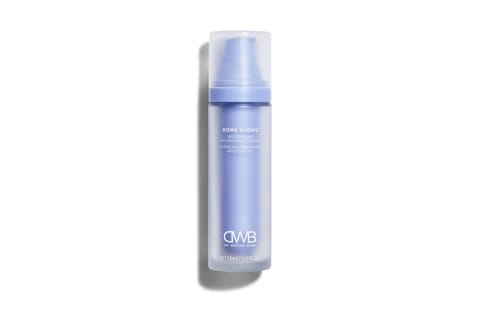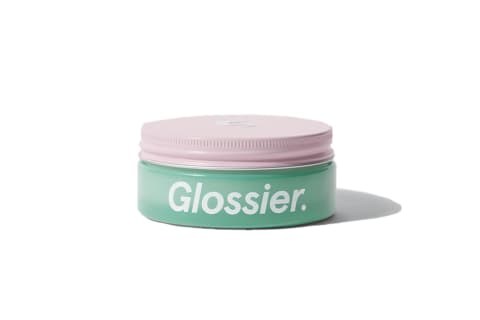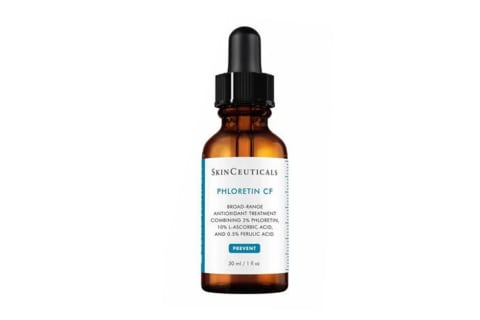I was writing about how diet affects the skin, specifically acne, and the emerging research on the gut-skin connection1. At the time, many dermatologists regarded the connection as an old wives’ tale. But not Bowe, who came to my first interview with her with research to back up all her advice on how to help skin from the inside out. A few years later, she was the first person to really introduce me to the skin microbiome (with her book The Beauty of Dirty Skin: The Surprising Science of Looking and Feeling Radiant From the Inside Out). And now the microbiome is one of my personal favorite areas of interest. Clearly, she’s influenced my work in a lot of ways. So, I always look forward to catching up with Bowe and finding out where the research has led her, what ingredients have piqued her interest, and how she’s caring for her skin at the moment. Here, how the mbg Collective member is gearing up for 2023. “I have acne-prone skin, but it’s also very sensitive and dry. So, for me, finding a moisturizer that gives me enough hydration, dives into the skin, feels comfortable, but doesn’t break me out has not been an easy task. I’m very reactive, so products that have fragrance, essential oils, or drying alcohols—my skin just won’t do well with them. “But a repairing moisturizer is a foundation of any skin care routine. Because if you don’t have a really good moisturizer that agrees with your skin, then it’s really hard to tolerate all of the more powerful actives.” “First, because I can’t slug on top of my exfoliation or retinoid night. Inherently, slugging is very occlusive, which can drive those powerful ingredients deeper into the skin and cause irritation. But then in between, on recovery nights, I couldn’t slug because I’m acne prone. “The most common ingredient people use for slugging is petroleum jelly. I know that’s quote-unquote noncomedogenic, but it is incredibly occlusive. And personally for me, it did cause me to break out. I also developed what is called milia, which are these tiny white bumps that were developing around my eyelid area. It’s a very common reaction to occlusive products. “But I wanted it to work, so I was experimenting with other products, especially during the winter months. During the summer I can get away with just a moisturizer, but during the winter I want something that is designed to sit on the surface and really seal in moisture. “And I actually really fell in love with this Glossier product, which is funny because it’s not a typical brand that I would gravitate toward. It doesn’t have that classic, science-backed approach. And it was a more youthful brand—it’s something that I think my daughter could get super excited about. But I actually think the After Baume’s formulation is really good. “It’s become a staple I use during the winter months, especially in very dry, tight areas—such as the juncture of my eyelid and upper cheek. I apply it at night, on top of my moisturizer to really create that comfortable seal.” “Thankfully, having safe, sustainable ingredients has become table stakes for brands. You need to be conscious of those things because the consumer expects that their products will be good for their bodies and for the planet. That used to be a differentiating factor for brands, but not anymore! “And now, they are looking for clinically proven and effective results. Retinoids are a category and class of ingredients that has the most scientific evidence behind its ability to transform the skin. “I think a big focus of 2023 is going to be educating people on how to correctly use them. I’ve been counseling my patients on how to fold them into their routine—and level up their routine—so they can tolerate it. Because it’s just one of those ingredients that’s incredibly powerful.” “I’m the first to say don’t splurge on a cleanser. With a cleanser, you’re washing it down the drain. Yes, you can do damage with a cleanser—so you need to pick a good one for your skin type—but you’re not going to transform your skin with a cleanser. Or don’t splurge on hyaluronic acid because it can temporarily plump your skin but it’s not really doing anything long term. “But when it comes to a vitamin C serum, it’s critical you get a high-quality one. It’s such an essential part of the skin care routine, too. A good serum can boost the effects of sunscreen, boost collagen, brighten dark spots, provide powerful antioxidant protection, and prevent a lot of issues and changes in the skin. I would say my current go-to is this SkinCeuticals one.” “Now I’ve moved on to educating on the nuances within skin cycling. When you only watch one short video, it’s easy to walk away with the misconception that it’s a four-night cycle that’s one-size-fits-all. But that’s not the way I introduced it or intended it to be. “I want people to know that you can level it up, or level down—essentially how to customize and personalize it to meet your skin’s needs and goals. It’s meant to be a flexible framework because our skin’s needs change over time. “For example, the way I’m skin cycling in the winter is very different from the way that I skin cycle in the summer. And when we have our hormonal shifts or when our skin matures and ages, then skin cycling needs to change over time with it. “So, the people who are most successful with skin cycling are those who are using it as a framework and structure. It’s important that people learn to listen to their skin and learn how to adapt to it. “The way I envision it is you can practice it in many different ways: The classic four-night cycle, the gentle cycle, the advanced cycle. You can make these little changes to meet your skin where it’s at.”






